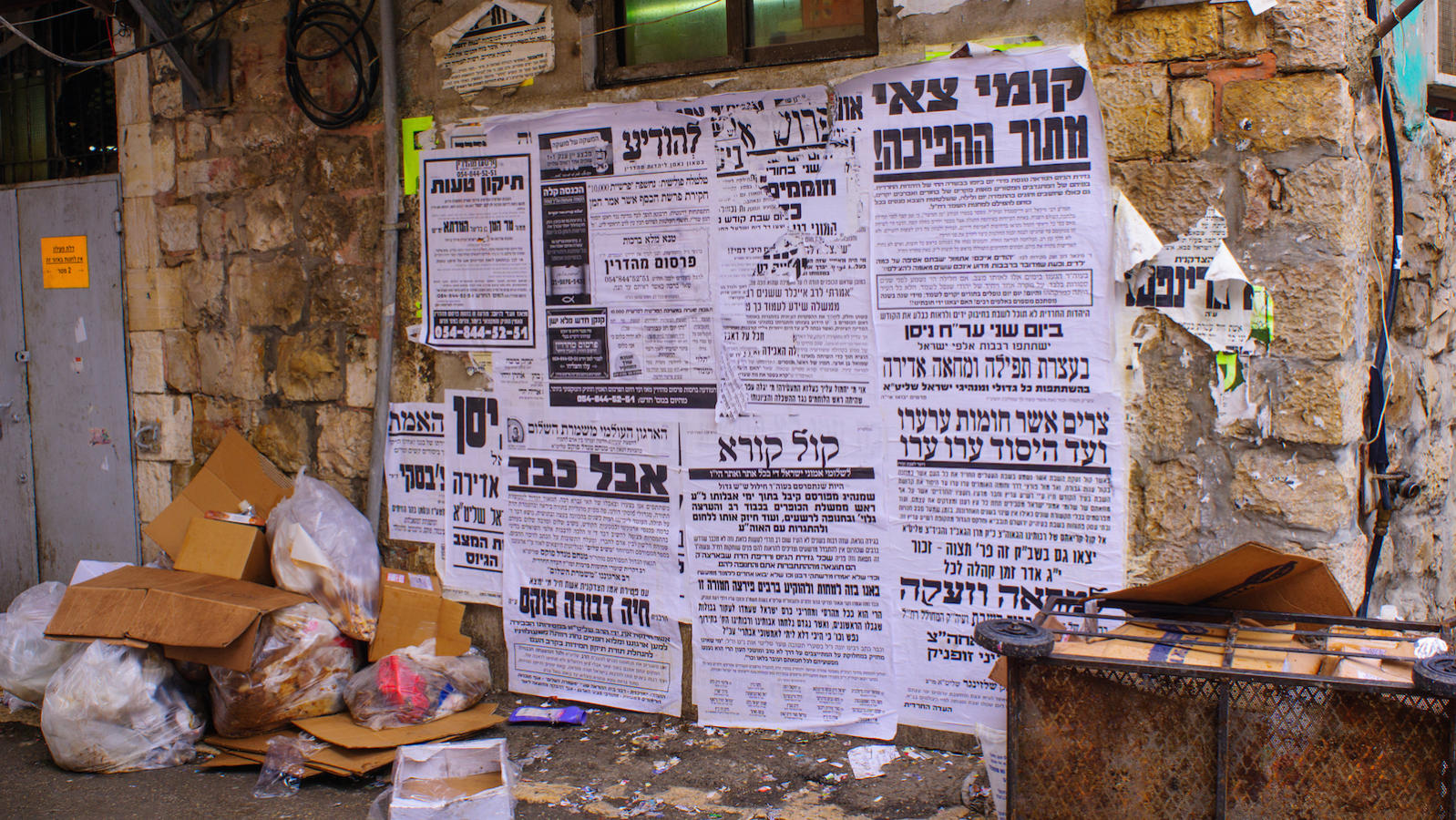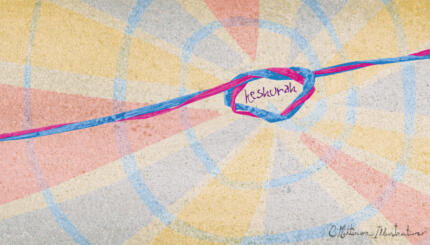Commentary on Parashat Re'eh, Deuteronomy 11:26-16:17
Our Torah portion begins with the following words:
Behold I set before you today a blessing and a curse; a blessing if you obey the commandments of the Lord your God, which I command you this day, and a curse if you do not obey the commandments of the Lord your God, but turn aside out of the way which I command you this day, to go after other gods, which you have not known. And it shall come to pass, when the Lord your God has brought you to the land to possess it, that you shall put the blessing upon Mount Gerisim, and the curse upon Mount Ebal. (Deuteronomy 11:26-29)
Blessings & Curses in the Environment
While there seems to be no obvious connection in these verses to the quality of the environment, nineteenth century biblical commentator Rabbi Samson Raphael Hirsch saw a message with deep ecological consequences. He wrote:
Gerisim and Ebal are two peaks of the Ephraim range of mountains which still show a striking contrast in their appearance. Gerisim to the south of the valley of Shechem presents a smiling green slope rising in fruit-covered terraces to its summit, Ebal on the north side, steep, bare and bleak, some 2,900 ft. high, slightly higher than Gerisim. The two mounts lying next to each other form accordingly a most speaking, instructive picture of blessing and curse.
They both rise on one and the same soil, both are watered by one and the same fall of rain and dew, the same air breathes over both of them, the same pollen wafts over both of them and yet Ebal remains in barren bleakness while Gerisim is clad to its summit in embellishment of vegetation. In the same way, blessing and curse are not conditional on external circumstances but on our own inner receptivity for the one or the other, on our behavior towards that which is to bring blessing.
Rabbi Hirsch describes how, particularly in the land of Israel, the difference between blessing and curse can be plainly evident in the physical appearance of an environment. In other words, there is a tangible relationship between the spiritual state of the land and its inhabitants and the physical appearance and quality of the environment.
Beauty & Adornment
This relationship, apparently, works both ways. The appearance of the land reflects its spiritual state, and we are required to ensure that areas of the land with higher levels of holiness be kept in appropriately high environmental states. Along these lines, Rabbi Yehuda Shaviv of Israel’s Yeshivat Har Etzion writes:
With your help, My Jewish Learning can provide endless opportunities for learning, connection and discovery.
In the land of Israel, the more holy the place, the greater the noi (adornment). And it appears that despite the noi of other mitzvot (commandments), which is an addition to the mitzvah, when it comes to the mitzvah of building the Temple in Jerusalem, noi is an intrinsic part of the mitzvah…we can conclude that the greater the dwelling of the Shechinah (Divine Presence) in a place, the greater the noi and yofi (beauty) that is required. Therefore, there is a requirement for noi and tiferet (splendor) of Eretz Yisrael; more so the requirement for noi of the Levitical cities; much more the requirement for noi of Jerusalem; and greater than all, the noi and yofi of the Beit HaMikdash and its tiferet.
As Shaviv writes, the land of Israel, due to its holiness, must be kept in a state of beauty and adornment. The holy city of Jerusalem (which is alluded to no less than 16 times in this week’s Torah portion as “the place that God will choose”) has a higher status vis-à-vis beauty and adornment than other parts of the land of Israel. This is reflected in the Talmud in the following passage (Bava Kama 82b):
(In Jerusalem) don’t make a garbage dump, and don’t make lime furnaces… because of the smoke (Rashi explains that the smoke would blacken the walls, which would disgrace the city), and don’t make gardens and orchards because of the foul odors (Rashi explains noxious weeds would grow there and be thrown out, and further, gardens are usually manured, and this would cause a bad smell).
As the Talmud indicates, maintaining the physical appearance and environmental quality of Jerusalem, at the bare minimum, requires the prevention of accumulated garbage, smoke and foul odors. It would appear that any environmental nuisance, such as air pollution or garbage on the sidewalks, would be a violation of Jerusalem’s sanctity.
The Jewish Sages, even in more recent times, were sensitive to this. For example, the Alter of Slobodka, one of the spiritual giants of a previous generation, would pick up garbage from the streets of Jerusalem, even though this would normally seem to be far below his dignity. With this in mind, it is hard to imagine how we can tolerate the level of pollution so common today in Jerusalem.
What We Can Do
Indeed, the holy land of Israel, and all the more so, the holy city of Jerusalem are designated as a special dwelling place for the Shechinah, the Divine Presence, and the Shechinah dwells in places of beauty and harmony. This is reflected in the amazing blessing that one says upon seeing something of exceptional beauty (Talmud Bavli Berakhot 58b)”One who sees beautiful creations and good trees says the blessing: ‘That’s how it is for Him in His world.'”
Obviously this is an important teaching for anyone living in Israel, and especially those living in Jerusalem. But God’s presence is everywhere, in greater and lesser levels of concealment. Wherever we are we can work to limit pollution and litter, and to do so with a consciousness that it is God’s world that we are caring for.
If we are far from Jerusalem, when we work to clean up the place where we do live, we can pray that Jerusalem will return to her splendor and show externally the incredible beauty and holiness inherent in our Holy City.
Provided by Canfei Nesharim, providing Torah wisdom about the importance of protecting our environment.
mitzvah
Pronounced: MITZ-vuh or meetz-VAH, Origin: Hebrew, commandment, also used to mean good deed.
Talmud
Pronounced: TALL-mud, Origin: Hebrew, the set of teachings and commentaries on the Torah that form the basis for Jewish law. Comprised of the Mishnah and the Gemara, it contains the opinions of thousands of rabbis from different periods in Jewish history.
Torah
Pronunced: TORE-uh, Origin: Hebrew, the Five Books of Moses.



